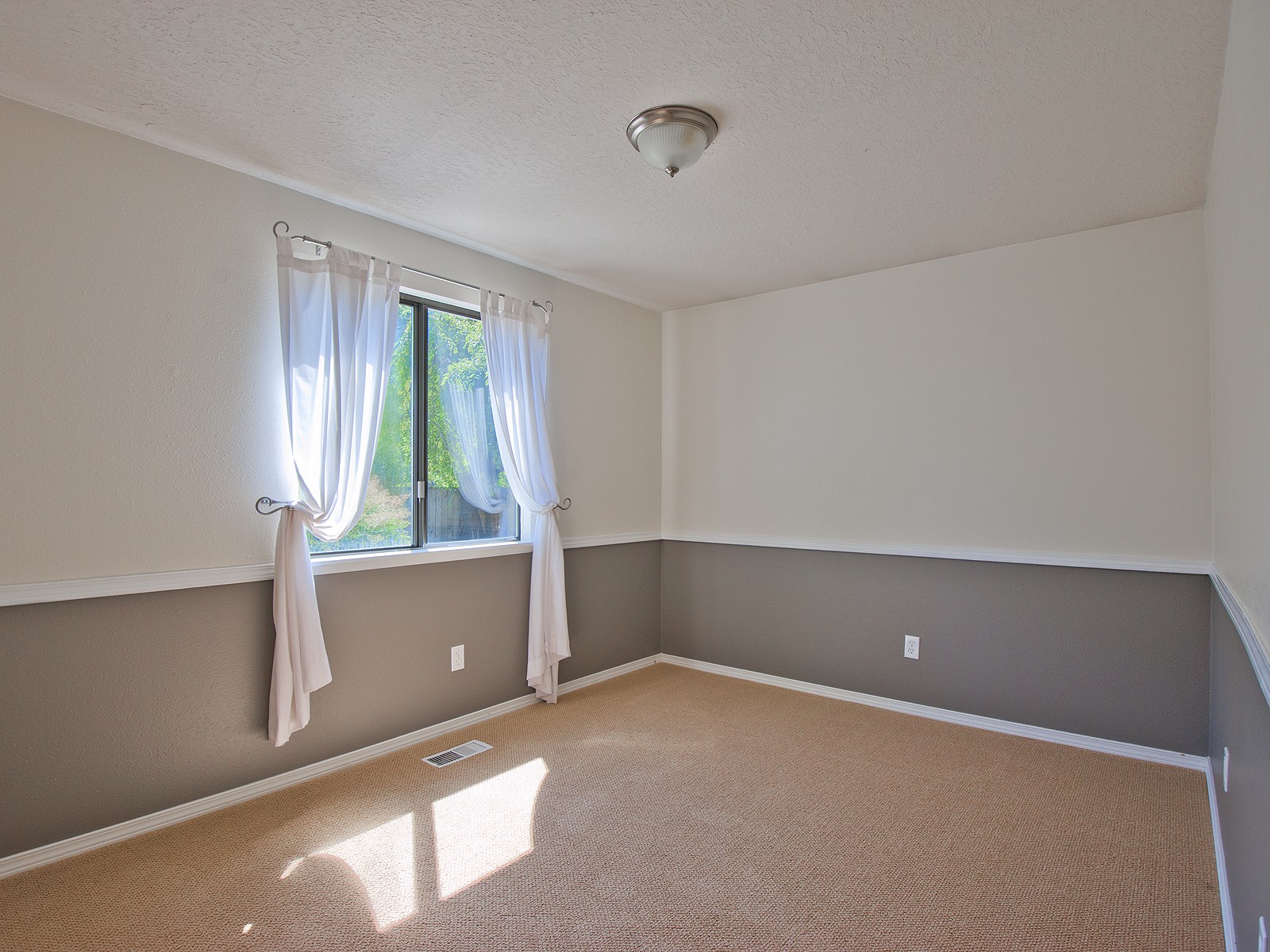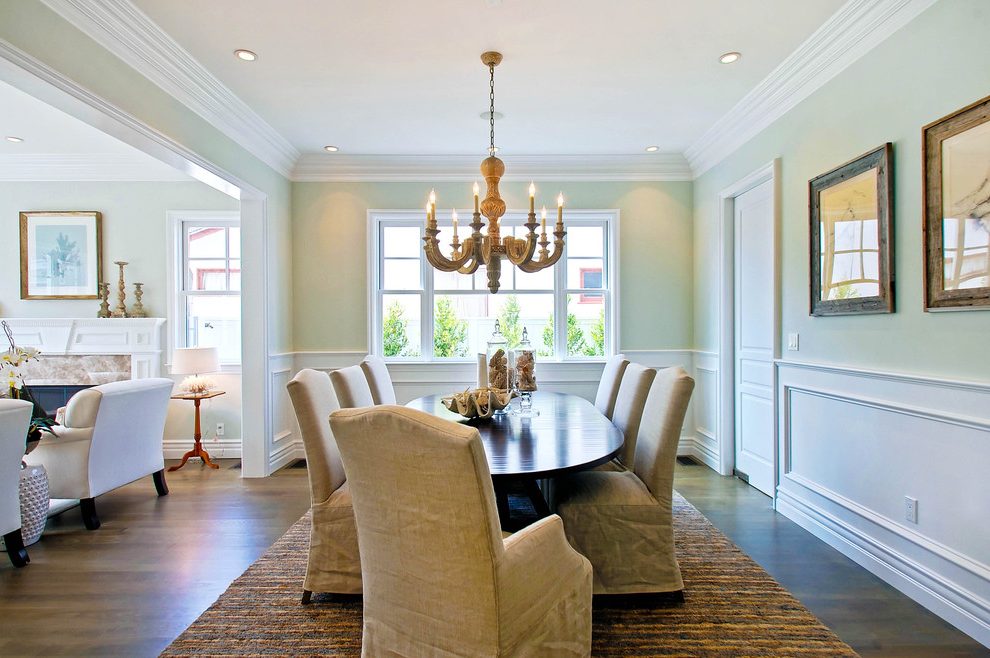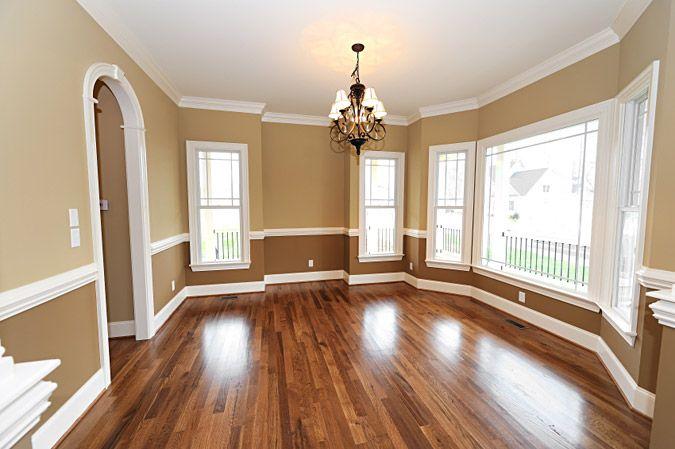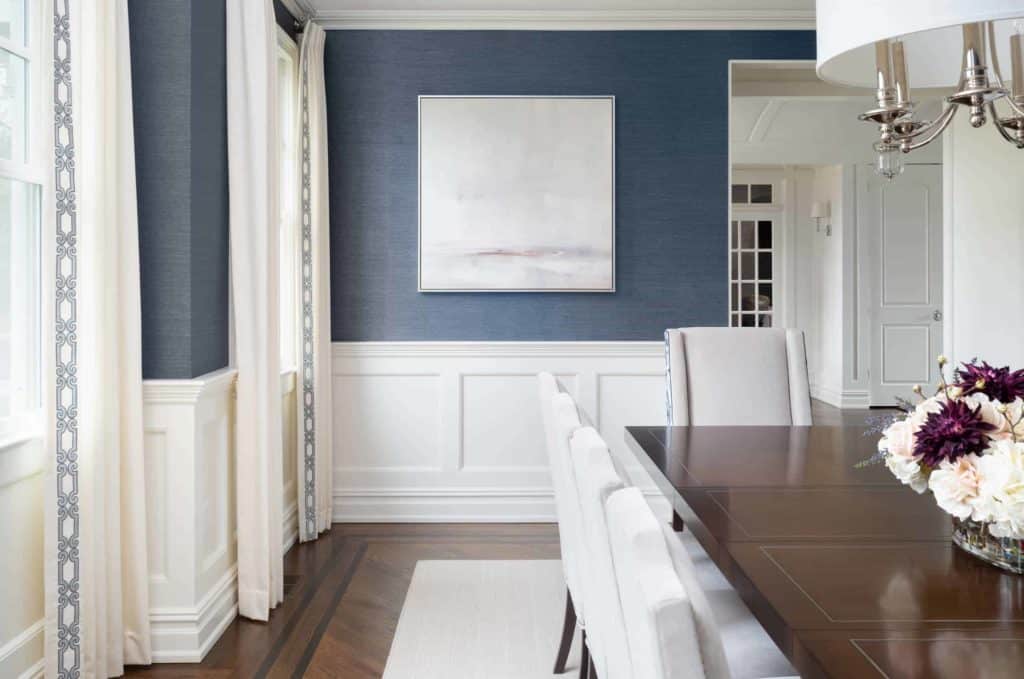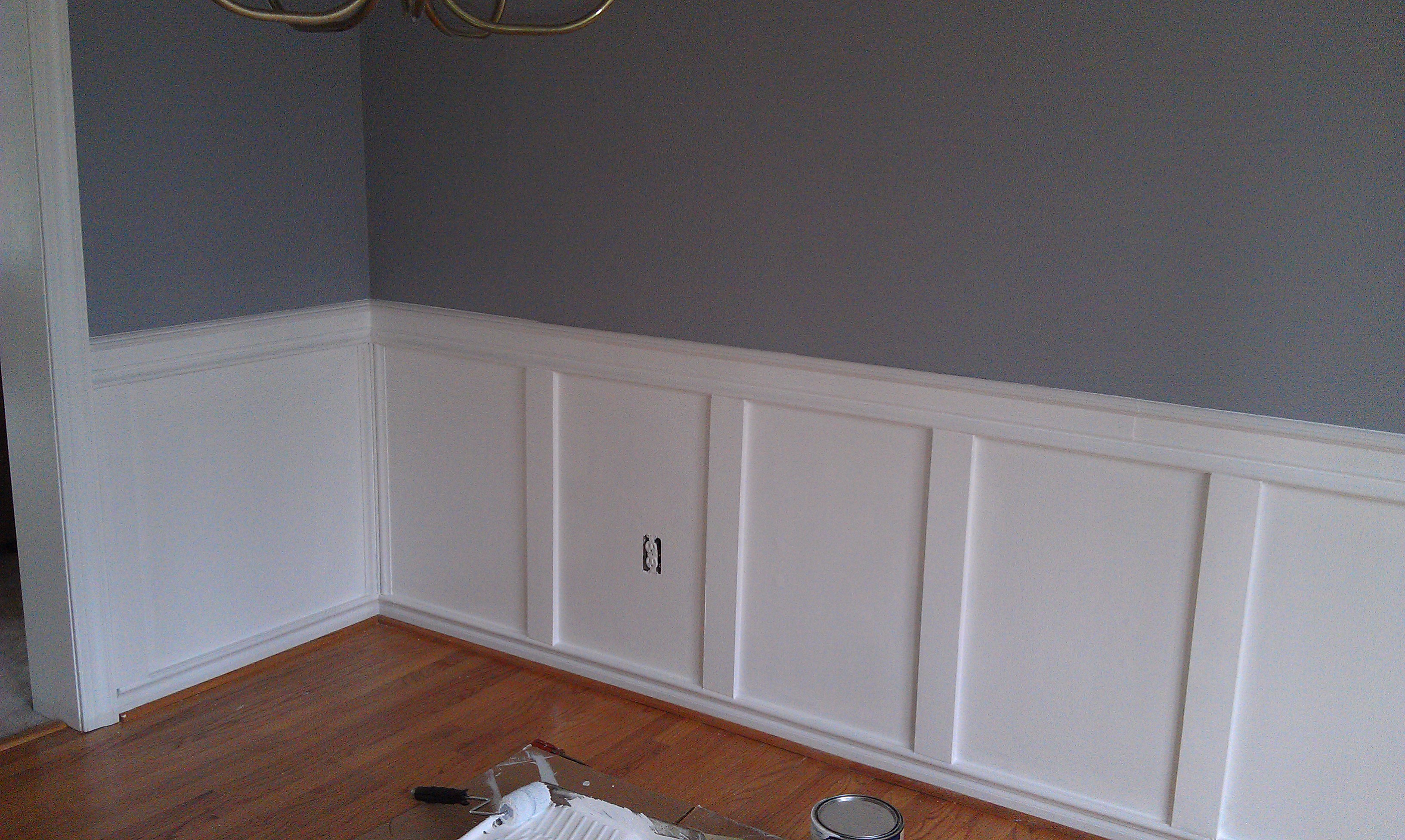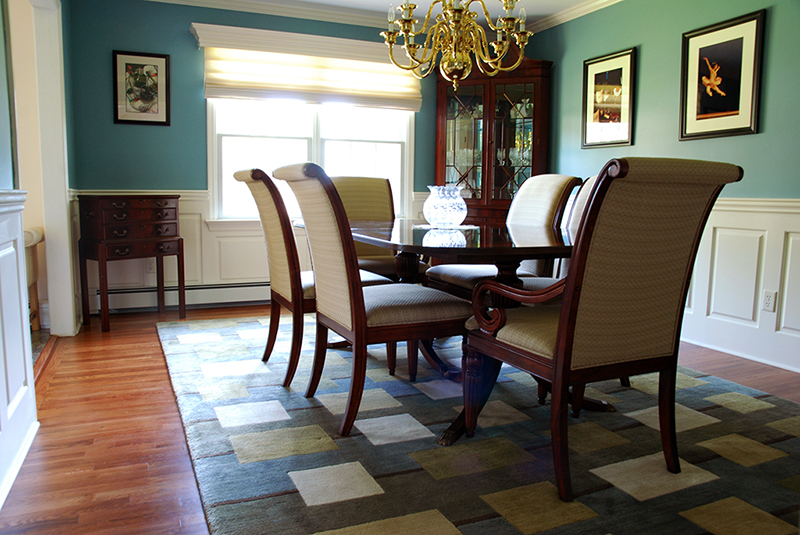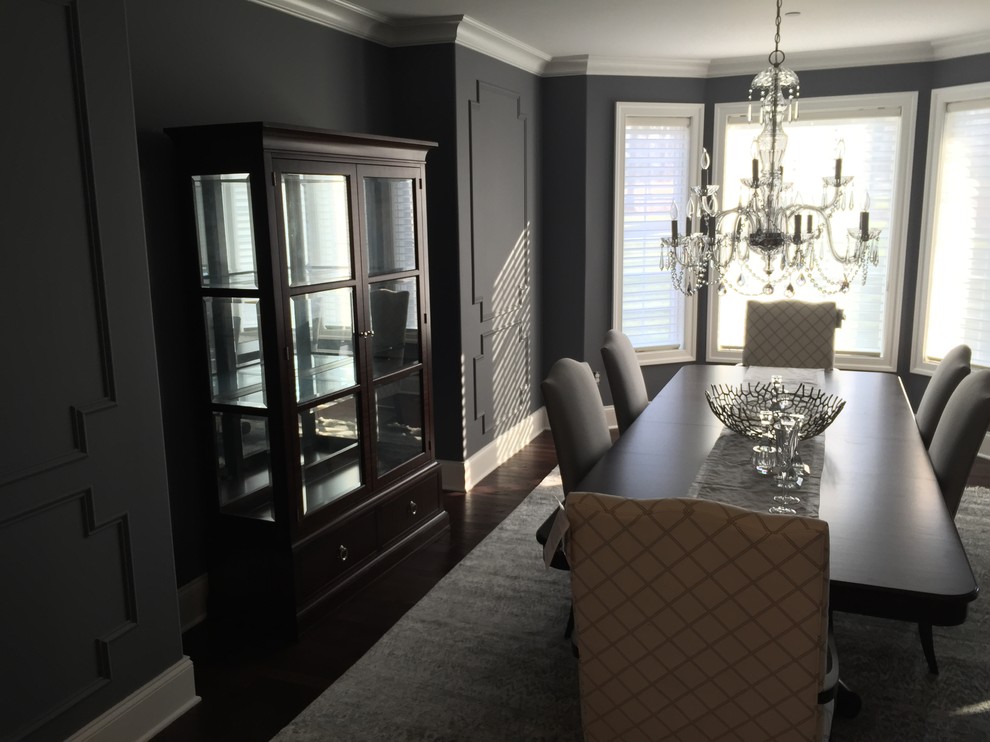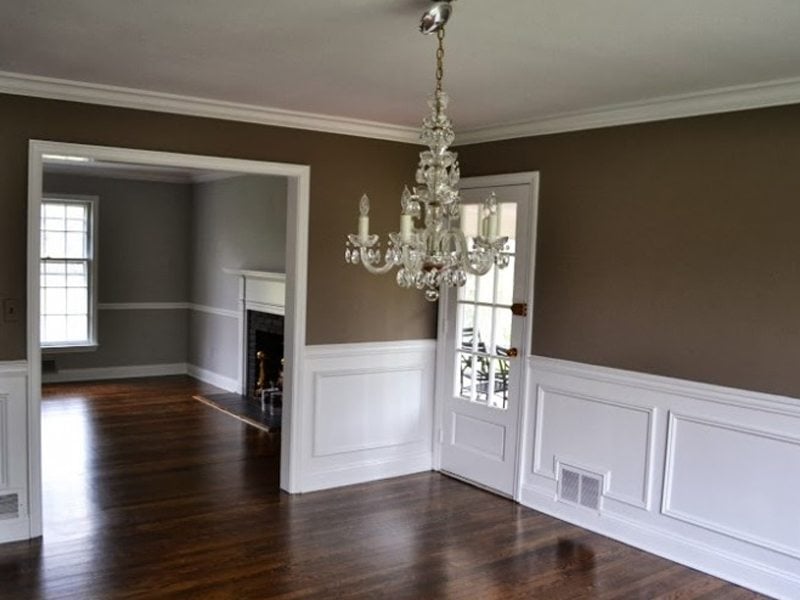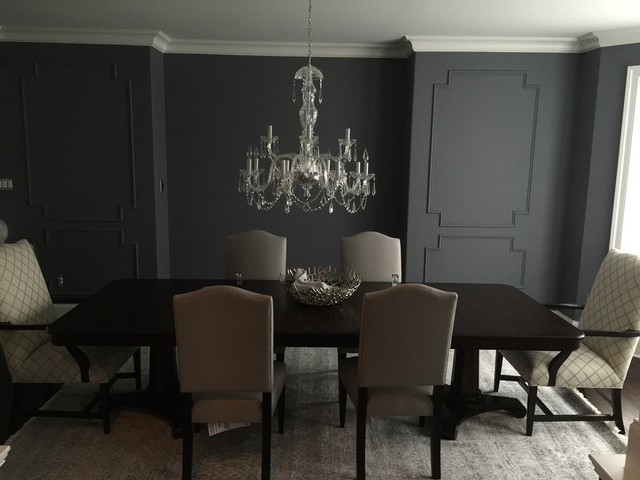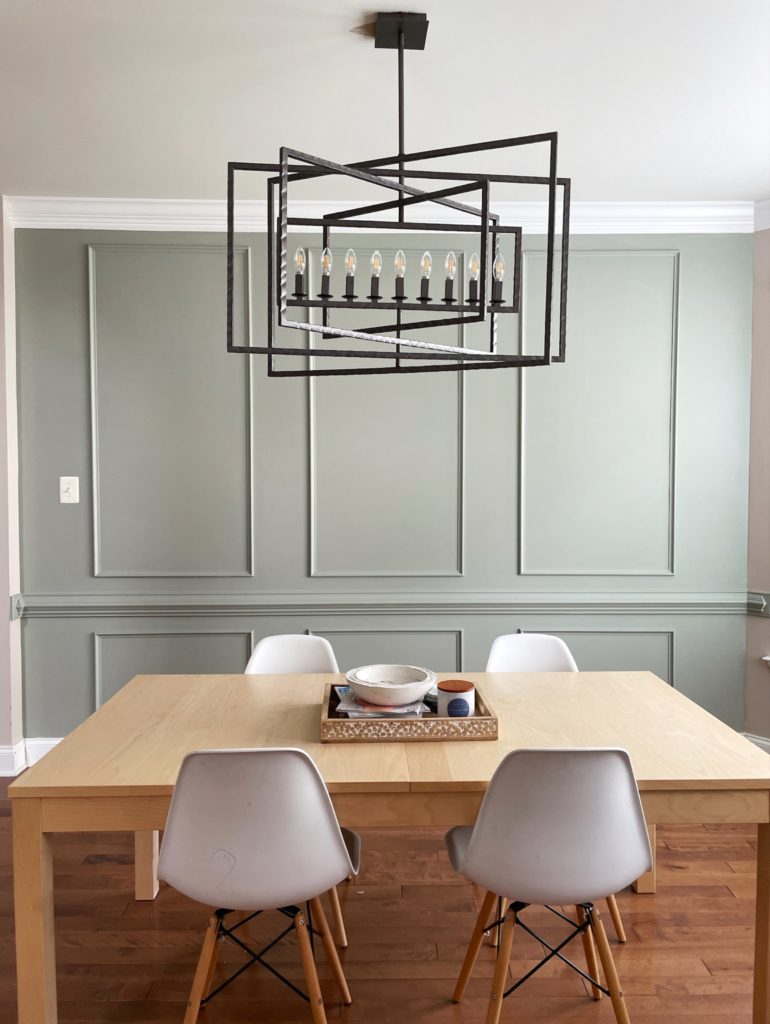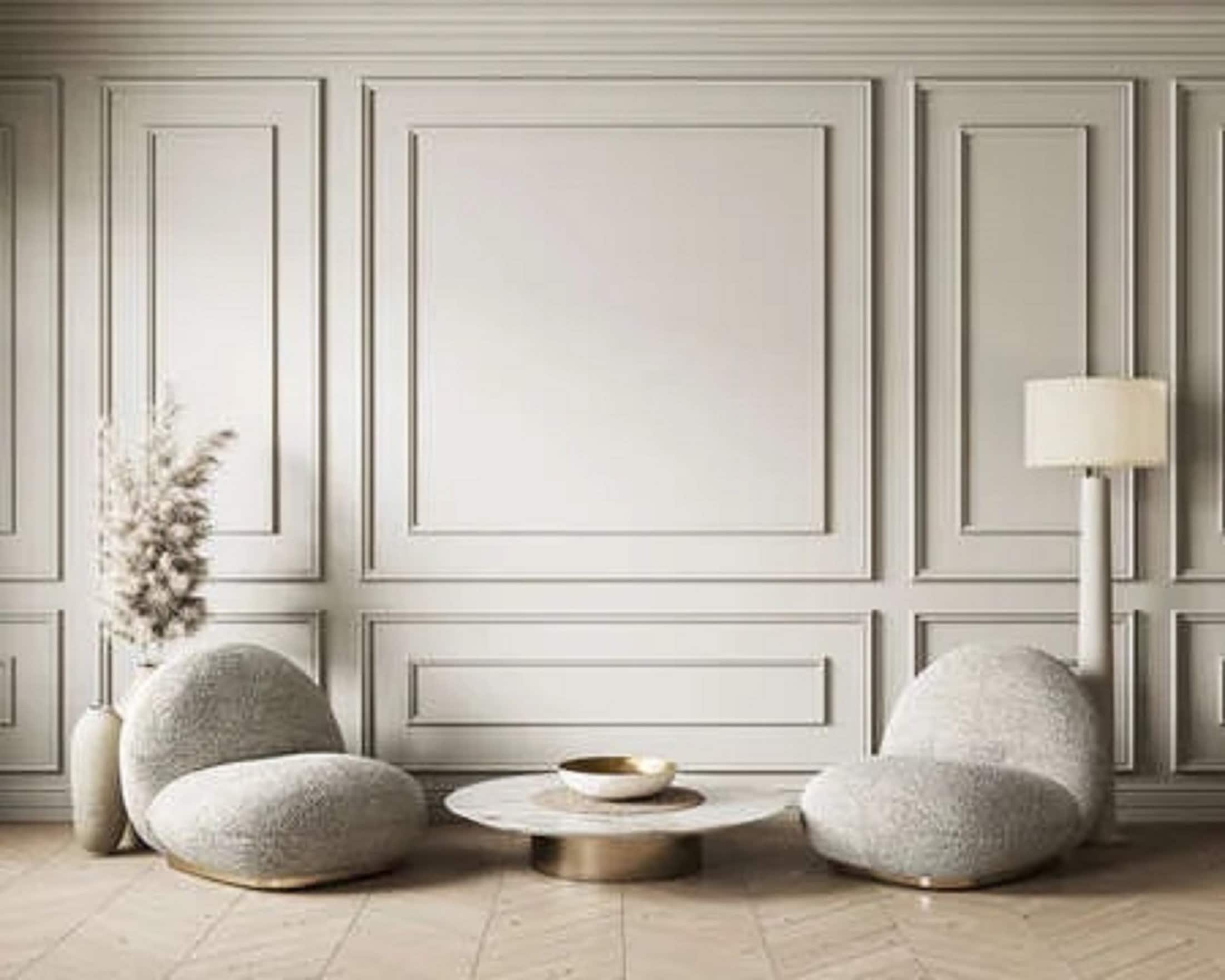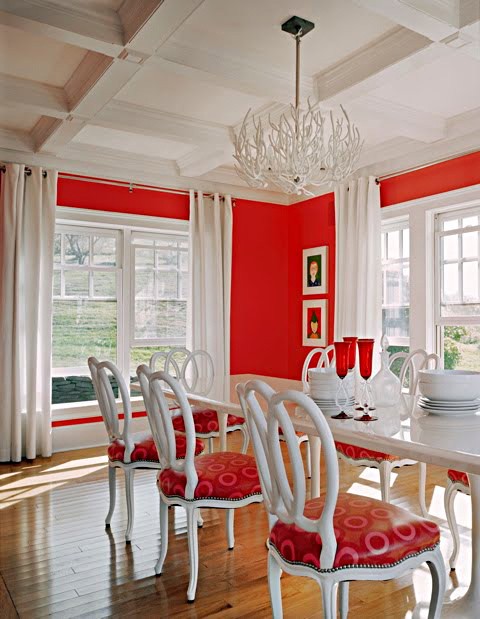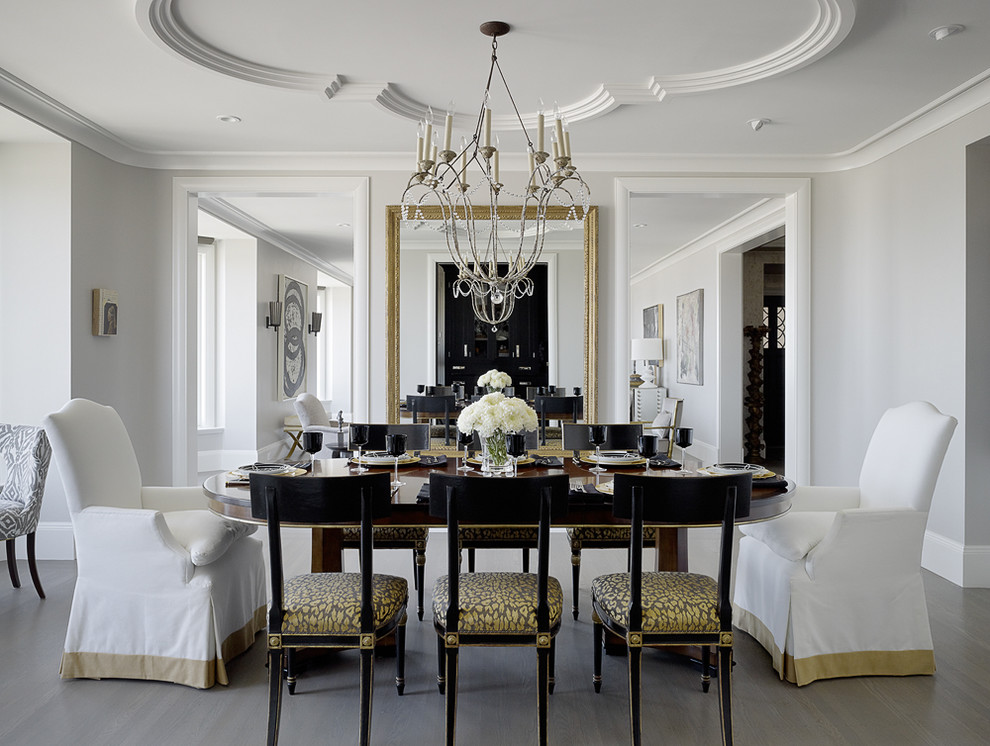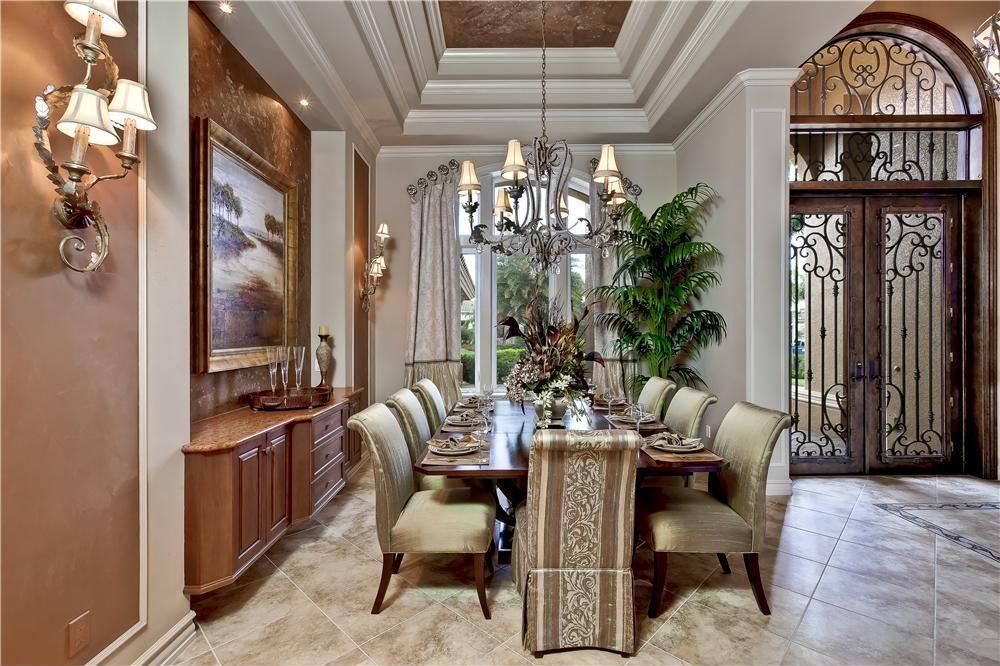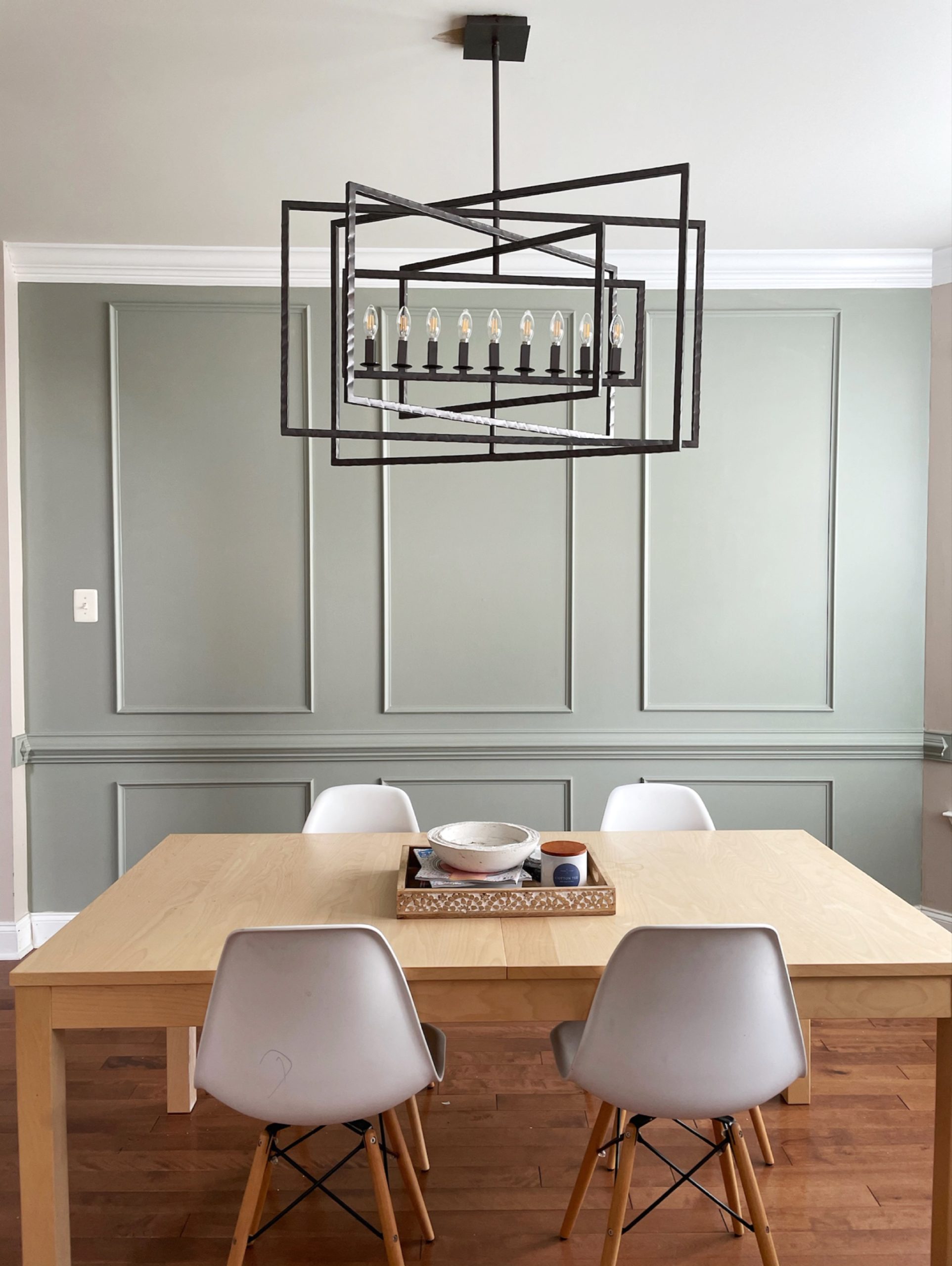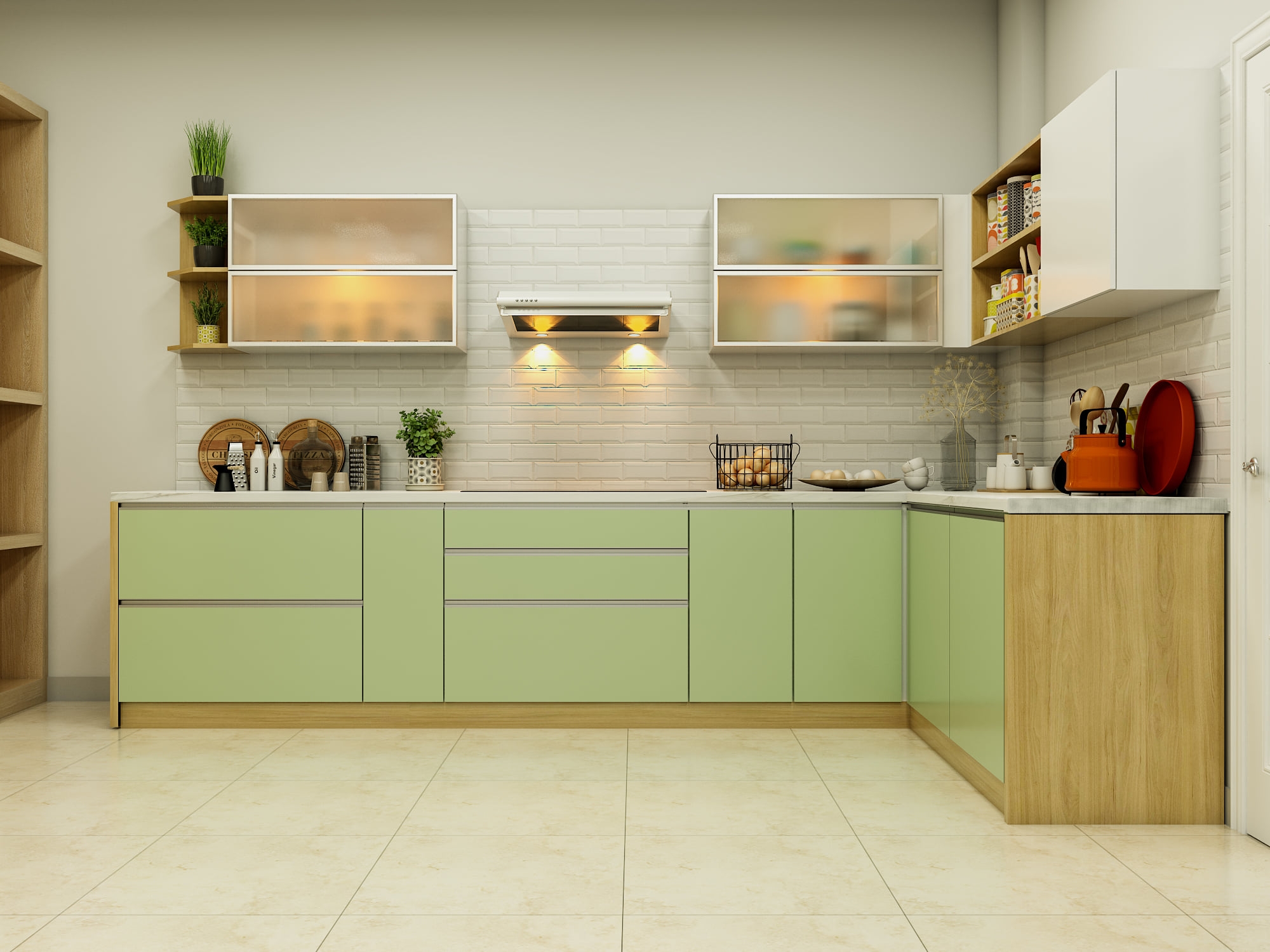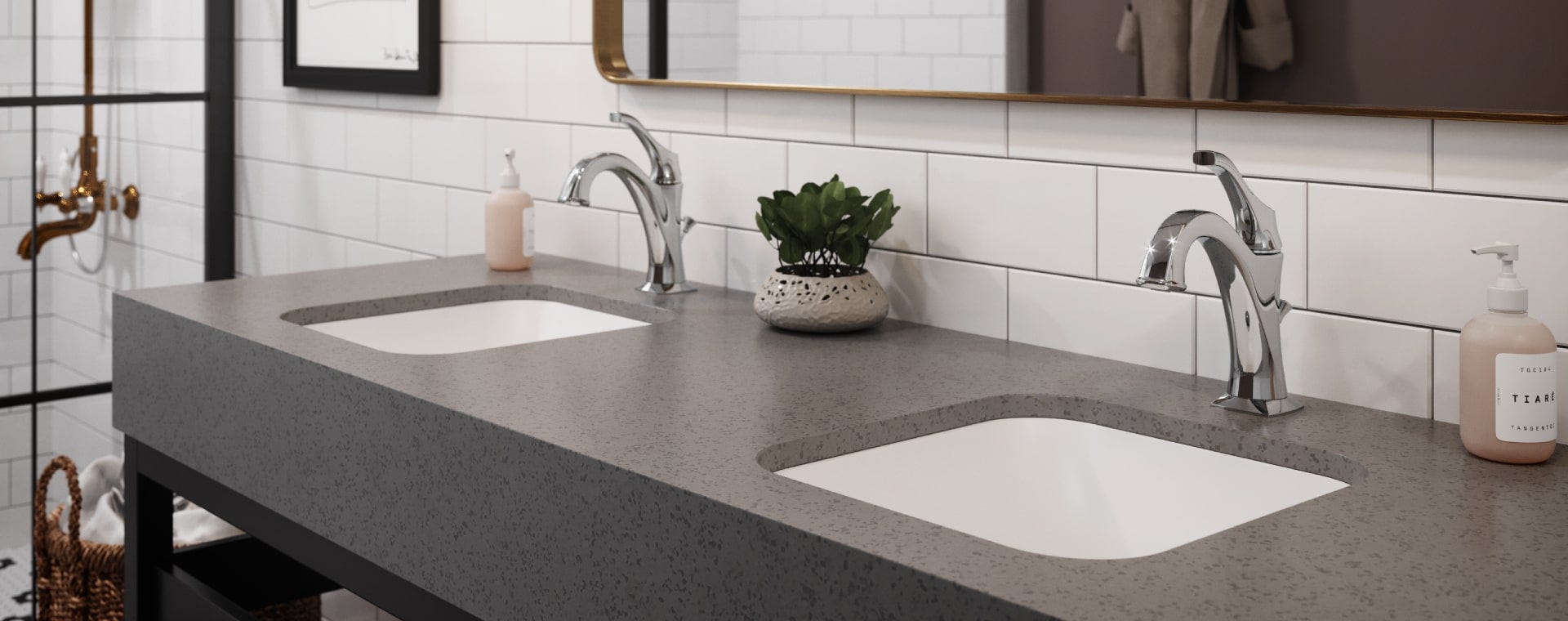Crown molding is a classic and elegant addition to any dining room. It is a decorative trim that is installed along the top of the walls, where they meet the ceiling. This type of molding can add visual interest and sophistication to your dining room, making it a popular choice for homeowners. Crown molding comes in various styles and designs, from simple to ornate, allowing you to choose the one that best fits your dining room's aesthetic. It can also be painted to match the color of your walls or ceiling, giving you endless possibilities for customization. Crown Molding in Dining Room
A chair rail molding is a horizontal piece of molding that is installed on the walls at the height of a chair back. Its main purpose is to protect the walls from damage caused by chairs or other furniture. However, it also serves as a decorative element in the dining room, creating a visual break between the lower and upper portions of the wall. This type of molding is available in various materials, such as wood, MDF, or polyurethane, and can be painted or stained to match your dining room's style. Chair Rail Molding in Dining Room
Baseboard molding is another common type of molding found in dining rooms. It is installed at the bottom of the walls, where they meet the floor, to cover any gaps and provide a finished look. Baseboard molding also serves as a protective barrier, preventing damage to the walls from mops, vacuums, or other cleaning tools. This type of molding is available in different sizes and styles, making it easy to find one that complements your dining room's design. Baseboard Molding in Dining Room
Wainscoting is a type of paneling that is installed on the lower portion of the walls, usually at chair rail height. It adds texture and visual interest to the dining room, making it a popular choice for homeowners looking to add character to their space. Wainscoting comes in various styles, from traditional to modern, and can be made from wood, MDF, or other materials. It can also be painted or stained to match the rest of the room's decor. Wainscoting in Dining Room
Picture frame molding is a type of molding that is installed on the walls to create a series of frames, resembling a picture frame. It is a unique and eye-catching way to add visual interest to your dining room. This type of molding can be used to display artwork, photos, or even as a decorative element on its own. Picture frame molding comes in various designs and can be painted or stained to match your dining room's color scheme. Picture Frame Molding in Dining Room
Panel molding is a type of molding that is used to create decorative panels on the walls. It is installed in a grid pattern, creating a sophisticated and elegant look in the dining room. This type of molding can be used to add texture and depth to the walls, making them a focal point in the room. Panel molding comes in various sizes, styles, and materials, allowing you to choose the one that best suits your dining room's design. Panel Molding in Dining Room
Ceiling molding, also known as cornice molding, is installed where the walls meet the ceiling. It adds a touch of elegance and sophistication to the dining room, creating a seamless transition between the walls and ceiling. This type of molding can come in various designs, from simple to intricate, and can be painted or stained to match the rest of the room's decor. It can also be used to hide any imperfections or gaps between the walls and ceiling. Ceiling Molding in Dining Room
Window molding is installed around windows to add a decorative frame and finish to them. It can be used to dress up plain windows, making them a focal point in the dining room. Window molding comes in various styles and materials, from simple trim to more elaborate designs. It can also be painted or stained to match the rest of the room's decor, creating a cohesive look. Window Molding in Dining Room
Door molding is installed around doors to create a finished and polished look. It can add visual interest and character to your dining room's interior doors, making them stand out. Door molding comes in various styles and can be painted or stained to match the rest of the room's decor. It can also be used to hide any gaps between the door frame and the wall, providing a more seamless look. Door Molding in Dining Room
Wall molding, also known as shadow box molding, is installed on the walls to create a series of squares or rectangles. It adds texture and depth to the walls, making them a focal point in the dining room. This type of molding can be used to showcase artwork, photos, or as a decorative element on its own. It comes in various designs and can be painted or stained to match the rest of the room's decor. Wall Molding in Dining Room
Molding in Dining Room: Adding Elegance and Charm to Your Home Design
/ChairRailinginFormalDiningRoom-5ab8fc2f1f4e130037a980ea.jpg)
The Importance of Molding in House Design
 When it comes to designing a house, every detail counts. From the color of the walls to the furniture placements, every decision has an impact on the overall look and feel of a home. One element that often gets overlooked is
molding
. However, this small but significant feature can make a big difference in the aesthetic appeal of a house, particularly in the dining room.
When it comes to designing a house, every detail counts. From the color of the walls to the furniture placements, every decision has an impact on the overall look and feel of a home. One element that often gets overlooked is
molding
. However, this small but significant feature can make a big difference in the aesthetic appeal of a house, particularly in the dining room.
What is Molding?
 Molding, also known as trim or millwork, refers to decorative strips of wood, plastic, or plaster that are used to add architectural detail to a room. It can be found in various shapes and sizes, from simple and subtle to intricate and ornate. Molding is typically installed along the edges of walls, ceilings, and floors, creating a frame or border that adds depth and character to a room.
Molding, also known as trim or millwork, refers to decorative strips of wood, plastic, or plaster that are used to add architectural detail to a room. It can be found in various shapes and sizes, from simple and subtle to intricate and ornate. Molding is typically installed along the edges of walls, ceilings, and floors, creating a frame or border that adds depth and character to a room.
The Role of Molding in Dining Room Design
 The dining room is often considered the heart of a home, where family and friends gather to share meals and create memories. As such, it is essential to create a space that is not only functional but also visually appealing. This is where molding comes in.
Molding in the dining room
can help define the space, making it stand out and feel more sophisticated and elegant.
Molding can also be used to highlight architectural features such as windows, doors, and built-in cabinetry. It can create a sense of balance and symmetry in the room, making it visually pleasing. Additionally,
molding
can add texture and dimension, breaking up plain and flat walls and ceilings.
The dining room is often considered the heart of a home, where family and friends gather to share meals and create memories. As such, it is essential to create a space that is not only functional but also visually appealing. This is where molding comes in.
Molding in the dining room
can help define the space, making it stand out and feel more sophisticated and elegant.
Molding can also be used to highlight architectural features such as windows, doors, and built-in cabinetry. It can create a sense of balance and symmetry in the room, making it visually pleasing. Additionally,
molding
can add texture and dimension, breaking up plain and flat walls and ceilings.
Choosing the Right Molding for Your Dining Room
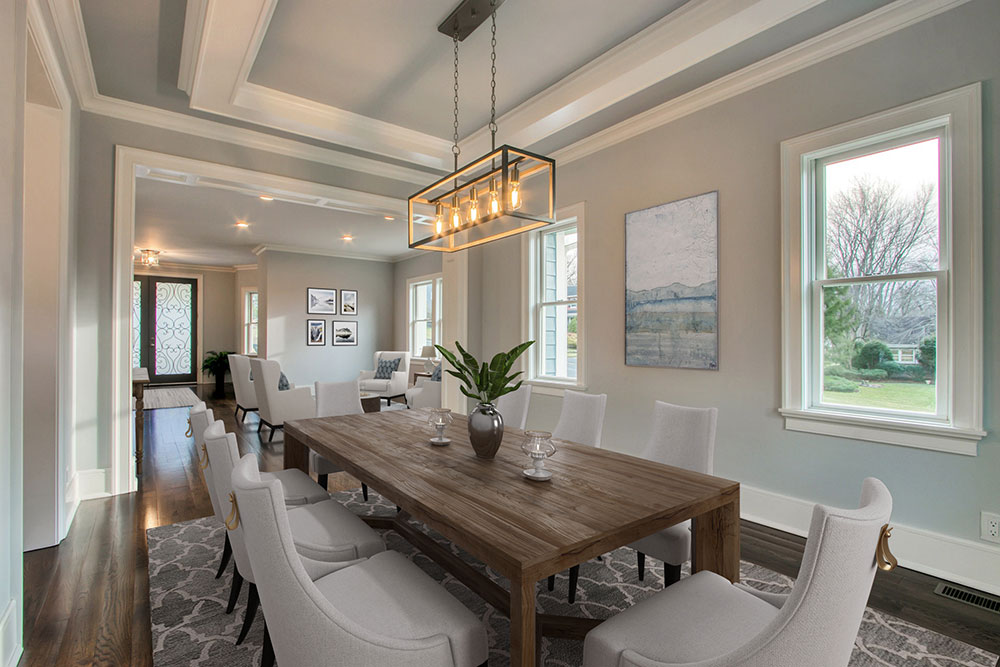 There are various types of molding available, each with its own unique style and purpose. When selecting molding for your dining room, it is essential to consider the overall design and theme of the room. For a traditional and formal look, opt for intricate and detailed
molding
with a classic design. If you prefer a more modern and minimalistic style, simple and clean-lined molding would be more suitable.
It is also crucial to consider the size and scale of the room when choosing
molding
. Larger rooms can handle more substantial and bolder moldings, while smaller rooms may require more subtle and delicate options. Additionally, the color of the molding should complement the color scheme of the room, creating a cohesive and harmonious look.
There are various types of molding available, each with its own unique style and purpose. When selecting molding for your dining room, it is essential to consider the overall design and theme of the room. For a traditional and formal look, opt for intricate and detailed
molding
with a classic design. If you prefer a more modern and minimalistic style, simple and clean-lined molding would be more suitable.
It is also crucial to consider the size and scale of the room when choosing
molding
. Larger rooms can handle more substantial and bolder moldings, while smaller rooms may require more subtle and delicate options. Additionally, the color of the molding should complement the color scheme of the room, creating a cohesive and harmonious look.
In Conclusion
 Incorporating
molding in the dining room
is a simple yet effective way to add elegance and charm to your home design. It not only adds visual interest but also helps define the space and create a more cohesive and polished look. With a wide range of options available, you can choose the perfect molding to suit your style and enhance the overall aesthetic of your dining room.
Incorporating
molding in the dining room
is a simple yet effective way to add elegance and charm to your home design. It not only adds visual interest but also helps define the space and create a more cohesive and polished look. With a wide range of options available, you can choose the perfect molding to suit your style and enhance the overall aesthetic of your dining room.

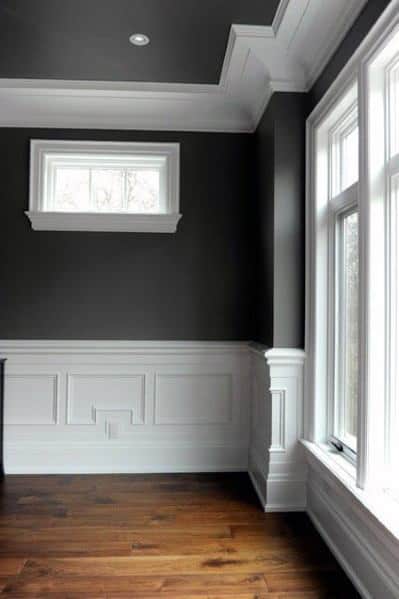


:max_bytes(150000):strip_icc()/Diningroomwithcrownmolding-GettyImages-145121522-85951b058d5f406cb48bd96375265b2e.jpg)











